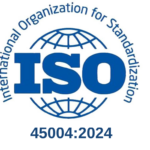In our previous edition of Insight, we ran Part 1 of our look into Contractor Safety Management and focused on the safety aspects associated with the first two stages of the Contractor Management Lifecycle – Works Planning and Contractor Assessment. In this edition Part 2, we will examine the Contractor Engagement and Onsite Contractor Management stages, and aim to provide some useful information to assist your organisation with its WHS governance approach for contractors throughout the contractor management lifecycle.

Focusing attention again on the health and safety aspects, let’s take a look at what these consist of for the Contractor Engagement and Onsite Contractor Management stages.
Contractor Engagement Stage
In Part 1 for the Contractor Assessment Stage, we emphasised that as an absolute minimum, contractors seeking to perform works must be able to demonstrate they have the capability and competency to meet both WHS legislative and your organisation’s requirements. Obviously, there are other non-WHS factors that will also influence contractor selection such as cost, quality and environmental considerations. Only after confirming the Contractor’s demonstrated ability to meet all requirements should engagement of the Contractor proceed.
It is at this stage that the WHS considerations associated with the scope of works that were identified during the Works Planning Stage (such as known and suspected hazards, any high-risk construction work activities to be performed and the organisation’s minimum controls for managing specific hazards) are to be communicated with the Contractor. As the Client, your organisation should ensure you have a process that documents and communicates this key information to the Contractor, so they are able to manage the identified WHS risks when they are onsite.
Depending on the mechanism by which a Contractor is engaged, WHS targets, objectives and key performance indicators can be established and written into the contract for services. This can then be used as an instrument by which to hold the Contractor accountable for the required standard of WHS performance.
Onsite Contractor Management Stage
For the Client, this stage consists primarily of two WHS governance activities:
- Supervision of the Contractor – This can range from full-time direct observation of the Contractor whilst on site, to less onerous check-ins and discussions of any WHS issues as they arise. The key here for determining an appropriate supervision regime is that it should take a risk-based approach that considers the:
- Risk associated with the scope of work and activities undertaken at any point in time,
- Experience and capability of the Contractor, and
- Recent WHS performance of the Contractor including any incidents, observations of unsafe behaviours and outcomes of any WHS audits and inspections.
As a general rule:
- The greater the risk associated with the work = the greater the level of supervision required
- The lower the experience of the Contractor = the greater the level of supervision required
- The poorer the WHS performance of the Contractor (e.g. occurrence of serious incidents and non-conformances identified through workplace inspections) = the greater the level of supervision required.
- In all instances, it is important that some form of record of this supervision or monitoring is retained.
- Validation and Verification of the Contractor’s WHS Performance – In a similar way to the level of supervision required for a Contractor, conducting verification and validation activities such as WHS audits and inspections should take a risk-based approach. If your Contractor is new to your organisation, you should consider an increased level of WHS inspections to begin with. This not only gives you an immediate feel and understanding of their onsite WHS performance, but it also tells the Contractor from the start that your organisation takes safety seriously. The same general rule outlined above for supervision applies equally to the frequency and depth of validation and verification activities that you, as the Client should be undertaking on your Contractors.
The onsite contractor management doesn’t end here, however. In the next edition of Insight, we will continue our look at another key WHS governance activity whilst the Contractor is onsite – Incident Reporting, Investigation and Actioning, and finalise our series on Contractor Safety Management.
Please contact QRMC for more information.











